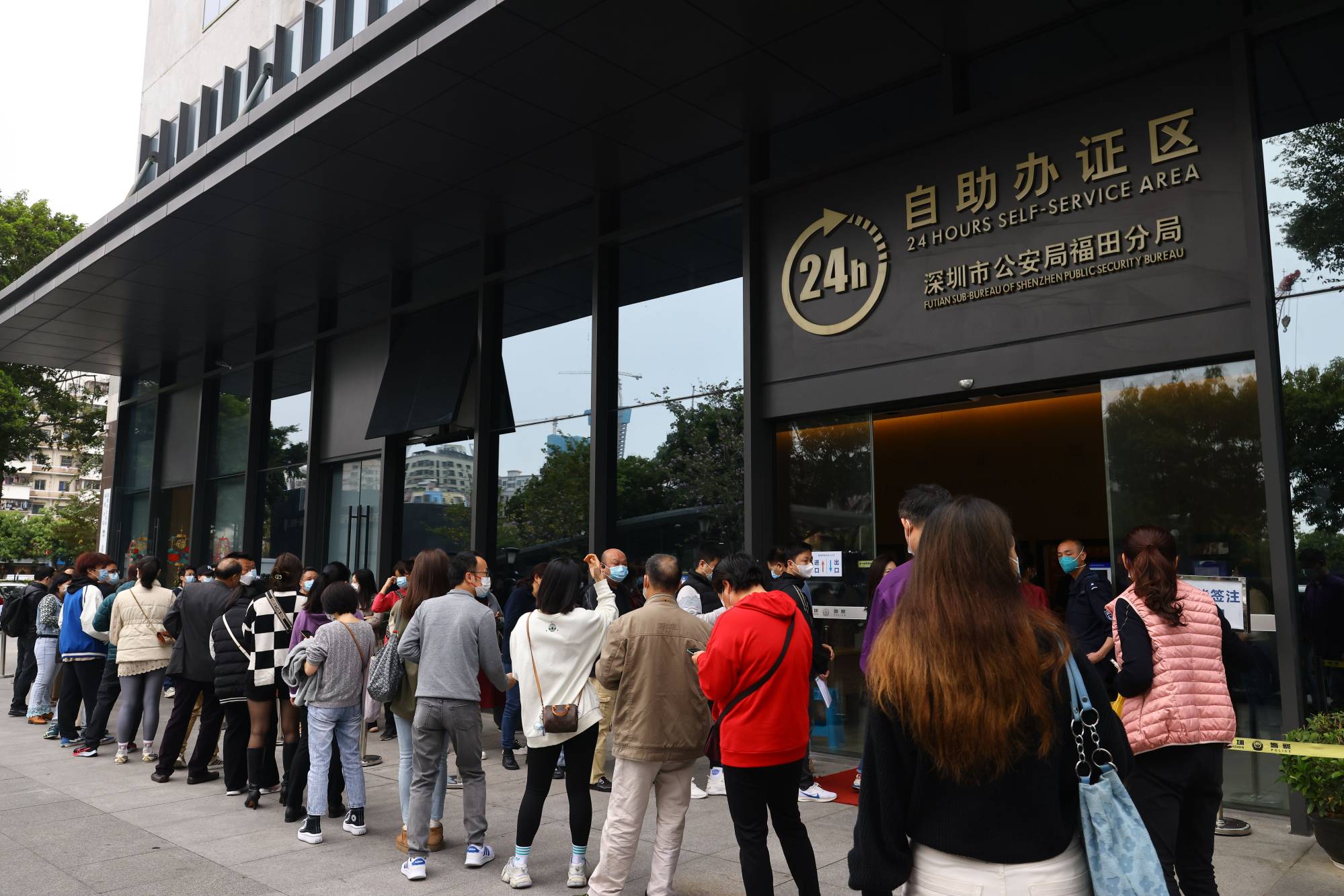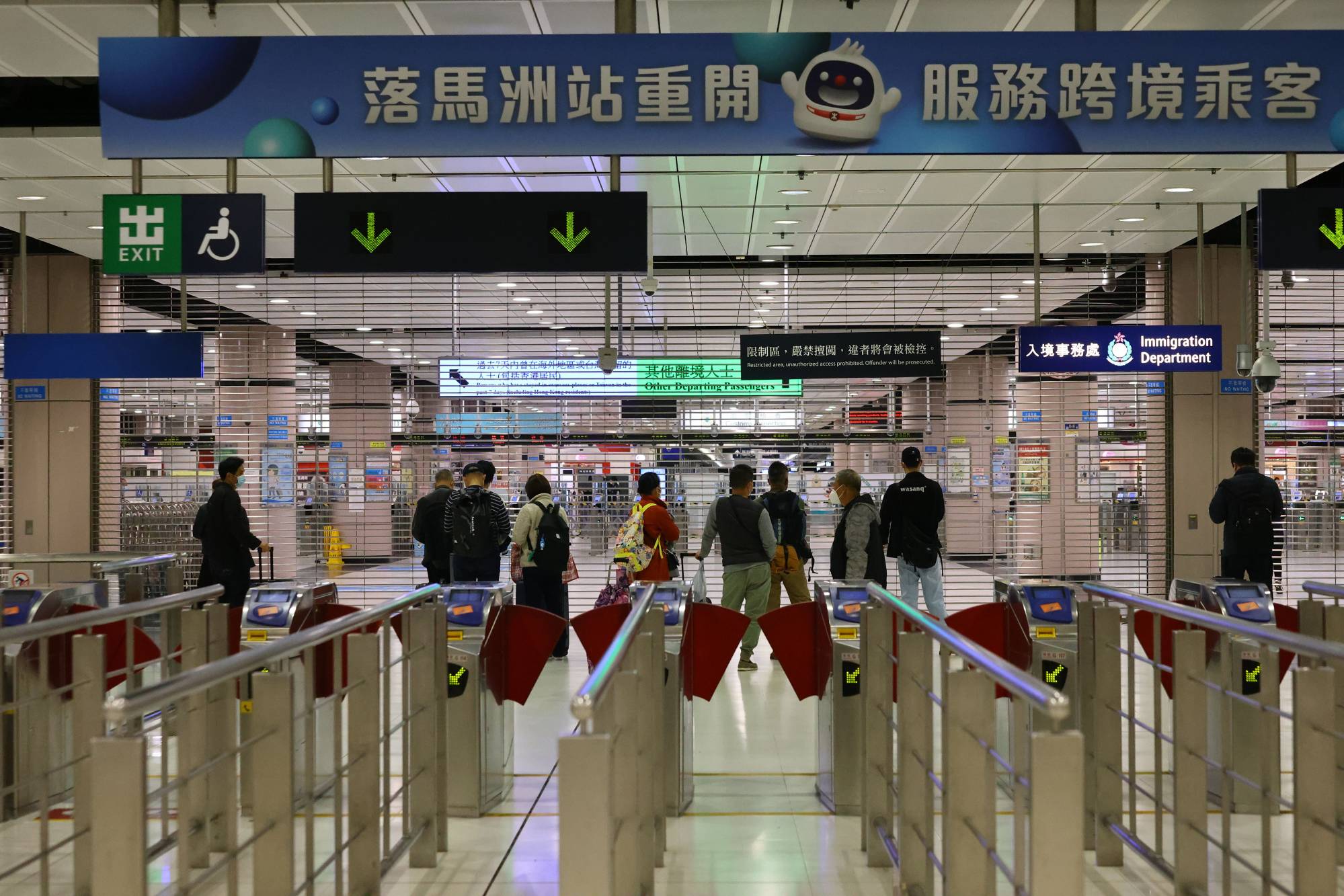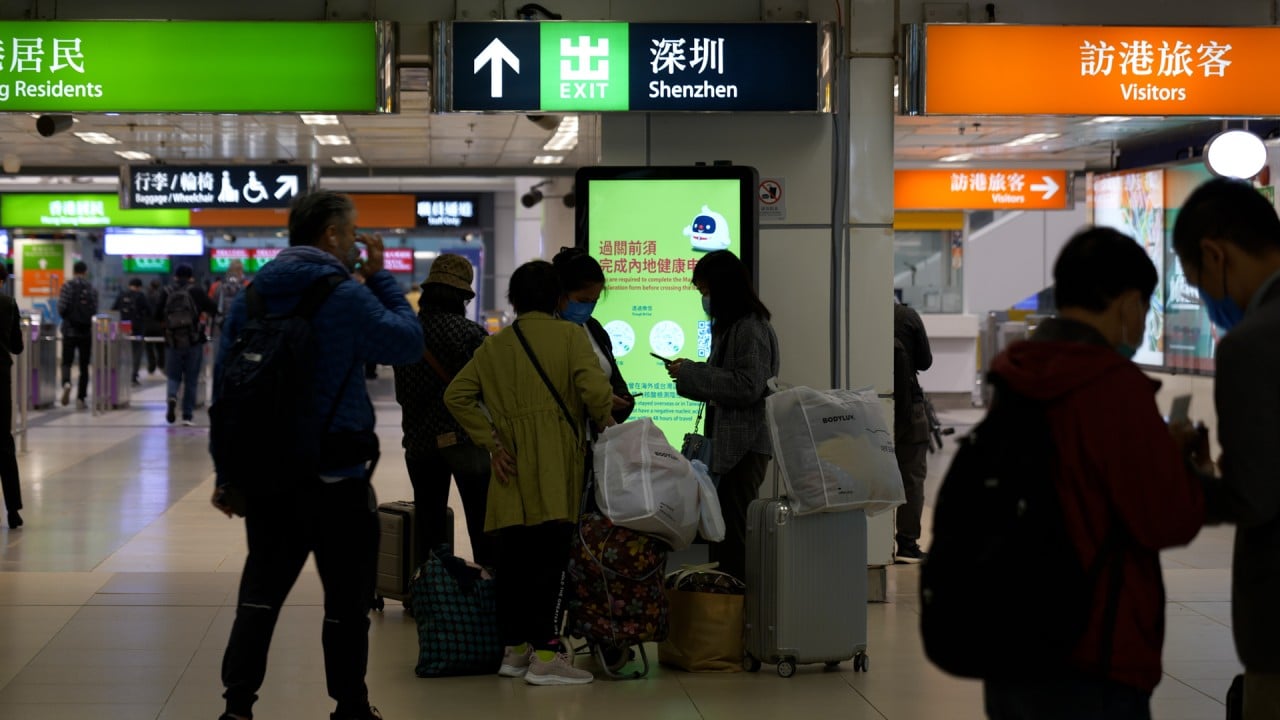
Quotas scrapped, no more tests: 190,000 cross Hong Kong-mainland China border on first day of full reopening
- Local officials say they are discussing with their mainland counterparts how to simplify the health declaration for travellers leaving city
- Monday marked reopening of Lo Wu and Lok Ma Chau land control points, as well as launch of passenger clearance service at Heung Yuen Wai crossing
While the first day of the full reopening was largely smooth, according to authorities, local officials said they were discussing with their mainland counterparts how to simplify the health declaration for travellers leaving the city, after some elderly people complained of difficulties in completing the online form.
Monday also marked the reopening of the Lo Wu and Lok Ma Chau land control points – which were closed to passengers for as much as three years – and the launch of the passenger clearance service at the Heung Yuen Wai border facility, which only allowed cargo through when it entered operation in August 2020.
The polymerase chain reaction (PCR) testing requirements and quota system were also lifted. Only those who have spent time overseas or in Taiwan seven days before heading to the mainland would need to present negative test results.
More tourists from north of the border were expected to arrive after mainlanders rushed to renew their Hong Kong and Macau entry visas on the first day that self-service machines were made available since the reopening. The new arrangement allows mainlanders to be able to get their documents more quickly.
Border crossings: first day of travel as all checkpoints reopen between Hong Kong, mainland
As of 8pm, a total of 190,929 passengers had crossed the land border, with 102,959 heading to the mainland and 87,970 coming to Hong Kong, according to the Immigration Department. Among them, 54,598 people crossed via Lo Wu, the busiest control point on Monday.
Monday’s total figure was far higher than that recorded on January 8 when the first phase of the border reopening began, with 49,626 people travelling through land crossings that day.
But far fewer people crossed than in pre-pandemic times, when the number of travellers using land control points could be more than 320,000 a day.
While security minister Chris Tang Ping-keung said all border checkpoints operated smoothly in the morning, some Hongkongers heading north complained about having to complete a health declaration through a designated website or a specific service on WeChat, a social media app widely used on the mainland.
A 60-year-old man, who only gave his surname Kong, arrived at Lo Wu at around 7am but spent more than an hour sorting out the health declaration.
Hong Kong’s newest border crossing to accept passenger traffic from Monday
“It’s such a mess,” he said. “We only learned about this requirement after arriving here. I have no idea why they have to link the webpage with WeChat. We Hongkongers are more used to WhatsApp.”
A unique QR code is generated for each traveller after filling in the online health declaration form. The code is needed to cross the border.
Tang said Hong Kong officials were looking to simplify the procedures with the mainland authorities.
“We are working with the other parties on the mainland side to see how we can make it more effective and user-friendly for passengers,” Tang said, adding that care teams had been mobilised to help the elderly or others unfamiliar with the requirement.

He added that the government had not identified any resurgence in parallel trading activities since the first phase of reopening was launched early last month. Authorities would continue to monitor the situation, Tang said.
At the Heung Yuen Wai checkpoint, veteran cyclist Man Hok-him, 57, was the first person waiting when it opened at 7am. A San Tin resident, he used to ride his bike on the mainland multiple times a week before the border closed.
“This is witnessing history,” he said with excitement. “There might not be another new border checkpoint opening that I can be part of.”
‘Cheap and tacky’: ‘Hello Hong Kong’ tourism campaign panned by advertising experts
At Lok Ma Chau, Hugo Wu, 14, took the second train shortly before 7am to head to school in Fanling.
The Form Three student said his long trip, which began at 5.30am, was no hassle as he could see his parents every day after moving back to his Futian home last week.
“Before [the reopening of the border], I lived in Hong Kong, away from my parents. I get to see them more now,” he said.
The Hong Kong Tourism Board handed out welcome gift packs to visitors arriving at Heung Yuen Wai, Lo Wu and Lok Ma Chau control points.
There was little excitement in areas once popular with mainland tourists, such as Tsim Sha Tsui and Sheung Shui, on Monday.
And despite the full reopening, local business sectors were cautious about the prospects of recovery.

Ray Chui Man-wai, president of the Institute of Dining Art in Hong Kong and who also chairs Kam Kee Catering Group, said he did not expect a significant surge in customers across restaurants and cafes on Monday.
“It is just the first day of the border being fully reopened. I don’t expect much for customer flow and business. Post-Lunar New Year holiday is not the peak travelling season as mainlanders need to go back to work,” Chui said.
He added Hong Kong was still in the initial stage of a return to normality, and people might still need time to adjust and plan itineraries.
‘Hong Kong’s air passenger traffic could take 18 months to 2 years to recover’
“I feel confident that more mainland consumers will come during the Easter holiday in April and Labour Day in May,” he said.
Local pharmacies said business operations were normal in the morning without a noticeable increase in mainland customers, according to the Hong Kong General Chamber of Pharmacy vice-chairman Cheung Tak-wing.
He said he expected sales would surge about 20 per cent in the coming days compared with the partial border reopening on January 8.






